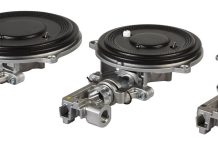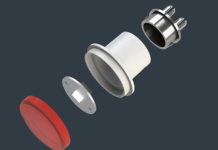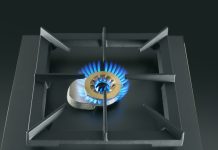 At SLIM, the research & development activity has been built up over the company’s 50 years of existence and is the basis for the realisation of customised lighting solutions. R&D is mainly developed from two strands: custom driven or market study. In the first case, it is a matter of researching and developing a new solution from the customer’s requirements. In the second case, on the other hand, starting with analysis and research, it is the technical department that directly tries to intercept a latent need by proposing an innovative solution for a specific sector. “With this in mind, it is essential to have a correct perception of the needs of a given sector, to go into it in depth in order to be proactive – the company explains –. As was the case with the development of LED micro-spotlights: high power light indicators with a very small LED source suitable for illuminating specific areas of coffee machines, food-equipment including ovens, hoods and hobs, and vending machines”. The custom-driven research and development process, as the term implies, is driven by the customer’s request and follows certain specific steps. “It tends to be the case that the customer’s technical department gets in touch with SLIM’s technical department, submitting an ad hoc request or requirement, which, however, can change during the course of the project – the company adds –. After requesting and investigating all preliminary and necessary information about the final output (such as type of source, light colour, shape of the component, etc.), the technical experts determine which solution is most appropriate. A prototype is then created (with a 3D printer) in order to provide the customer with an initial sample with which to evaluate the final effect of the required solution. In the case of the development of fibre optic solutions, SLIM provides the customer with an actual kit with LED source and fibre optic, so that the customer can try to place the light solution in the dedicated profile or space and visualise the effect and performance. If the customer is satisfied with the proposal, they are asked to share the 3D drawing of the application on which the lighting solution is to be inserted in order to assess the technical constraints, such as space, footprint, heat dissipation possibilities, and the scope to identify the most appropriate light source in terms of aesthetics and efficiency. Specifically, for the development of a custom signal with internal PCB circuit, in addition to the above, it is necessary to study how many LEDs to place on the circuit depending on the size and lighting effect the customer wants to achieve”. All stages of research and development take place within SLIM ‘s technical department, and the technicians offer continuous support: from concept to finished product development. “This allows us to follow step-by-step the evolution of the project, providing rapid responses to requests for changes, with the aim of achieving the best quality solution for the end customer”, the company concludes.
At SLIM, the research & development activity has been built up over the company’s 50 years of existence and is the basis for the realisation of customised lighting solutions. R&D is mainly developed from two strands: custom driven or market study. In the first case, it is a matter of researching and developing a new solution from the customer’s requirements. In the second case, on the other hand, starting with analysis and research, it is the technical department that directly tries to intercept a latent need by proposing an innovative solution for a specific sector. “With this in mind, it is essential to have a correct perception of the needs of a given sector, to go into it in depth in order to be proactive – the company explains –. As was the case with the development of LED micro-spotlights: high power light indicators with a very small LED source suitable for illuminating specific areas of coffee machines, food-equipment including ovens, hoods and hobs, and vending machines”. The custom-driven research and development process, as the term implies, is driven by the customer’s request and follows certain specific steps. “It tends to be the case that the customer’s technical department gets in touch with SLIM’s technical department, submitting an ad hoc request or requirement, which, however, can change during the course of the project – the company adds –. After requesting and investigating all preliminary and necessary information about the final output (such as type of source, light colour, shape of the component, etc.), the technical experts determine which solution is most appropriate. A prototype is then created (with a 3D printer) in order to provide the customer with an initial sample with which to evaluate the final effect of the required solution. In the case of the development of fibre optic solutions, SLIM provides the customer with an actual kit with LED source and fibre optic, so that the customer can try to place the light solution in the dedicated profile or space and visualise the effect and performance. If the customer is satisfied with the proposal, they are asked to share the 3D drawing of the application on which the lighting solution is to be inserted in order to assess the technical constraints, such as space, footprint, heat dissipation possibilities, and the scope to identify the most appropriate light source in terms of aesthetics and efficiency. Specifically, for the development of a custom signal with internal PCB circuit, in addition to the above, it is necessary to study how many LEDs to place on the circuit depending on the size and lighting effect the customer wants to achieve”. All stages of research and development take place within SLIM ‘s technical department, and the technicians offer continuous support: from concept to finished product development. “This allows us to follow step-by-step the evolution of the project, providing rapid responses to requests for changes, with the aim of achieving the best quality solution for the end customer”, the company concludes.



